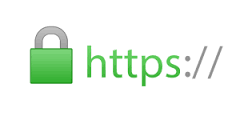TOP TEN (10) TIPS OF THE ONLINE SHOPPING
TO REMEMBER ALWAYS
1. Always verify the identity, location and contact details of the online shopping portals. There are reputed online companies like Amazon which provides 100% Purchase Protection for your shopping done on Amazon.in so that you can benefit from a safe and secure online ordering experience, convenient payment options such as cash on delivery, easy returns and enjoy a completely hassle free online shopping experience.
2. Check more about a company's history and reviews. This can be checked by searching on internet from others on consumer review sites. Many reputable online companies allow people to rate their service and products on the site itself. You can read these reviews for yourself to decide.
3. Confirm about billing, guarantees and delivery before you buy. Always look for the additional costs and payment details before sending credit card details. Check for packaging costs, Delivery costs, Billing before or after delivery of the products, Tracking of product delivery, Guarantee / Warranty for products, How you can return product if you don't like products after delivery, Who will bear the cost of returning items, If they have free pick up service when you return products.
4. Always read Terms & Conditions and privacy policy. Find out what they do with your personal information data. If they email you with updates or deals etc. or if it passes on information to third party dealers. This will avoid getting spam emails. You must make your own choice about how much information you want to share with online shopping portals.
5. Only choose secured websites if you are transferring funds via the site. Once you're happy with the company you are purchasing from, ensure that your credit card details are going to be processed using a secure connection. The most common form of secure encryption is known as Secure Sockets Layer or SSL for short. SSL encrypts data and breaks it up into small pieces so that the information cannot be read by anyone wanting to intercept it. To check that your place of purchase is using SSL or secure technology there are a few things to look out for in your Internet browser:

*Depending on your browser settings you may receive a message stating that you are entering a secure area. The secure area normally begins on the first page where you enter personal details*. *Most often the address bar in your browser will change from starting with http to https. The "s" indicates the site is secure but note that often you won't see the "s" until you are on the order page itself*. *You can also look out for a padlock symbol in your browser symbolizing the page is secure. The padlock should be closed. If it is open, assume the site is not secure*. *An unbroken key may also be present on a secure website*.
6. Take care when entering information. Be sure to enter the correct details when typing in your order. An incorrect address, amount of items or wrong item code can cause many difficulties. Always review the information before pressing send.
7. Use a credit card with online fraud protection. Just in case all else fails it pays to know the policy for online fraud protection offered by your credit card company. Many credit card companies offer protection against purchases made without your consent and have special clauses to include online purchases.
8. Install a Phishing Filter. There are various phishing filters, like SmartScreen Filter in Internet Explorer, which will help protect you from phishing sites by warning you when it detects a distrustful website.
9. Record purchase details. After purchasing your item, always record the details of the time, date, receipt number, and order confirmation. If you cannot print one off, take a screenshot as a form of proof of purchase.
10. Be aware of email scams designed to part you from your credit card information. Email frauds that are designed to gather personal information such as passwords and credit card details are known as phishing emails. The idea is that thousands or hundreds of thousands are sent out in the hope of reeling in unsuspecting victims and getting them to part with confidential information. The emails appear to be from well-known companies and can look quite convincing. However, legitimate companies, including all banks, will never send you an email with a link requesting your login, password, or credit card details. If in doubt, type the web address of the company it relates to directly into the browser rather than following the email link.
